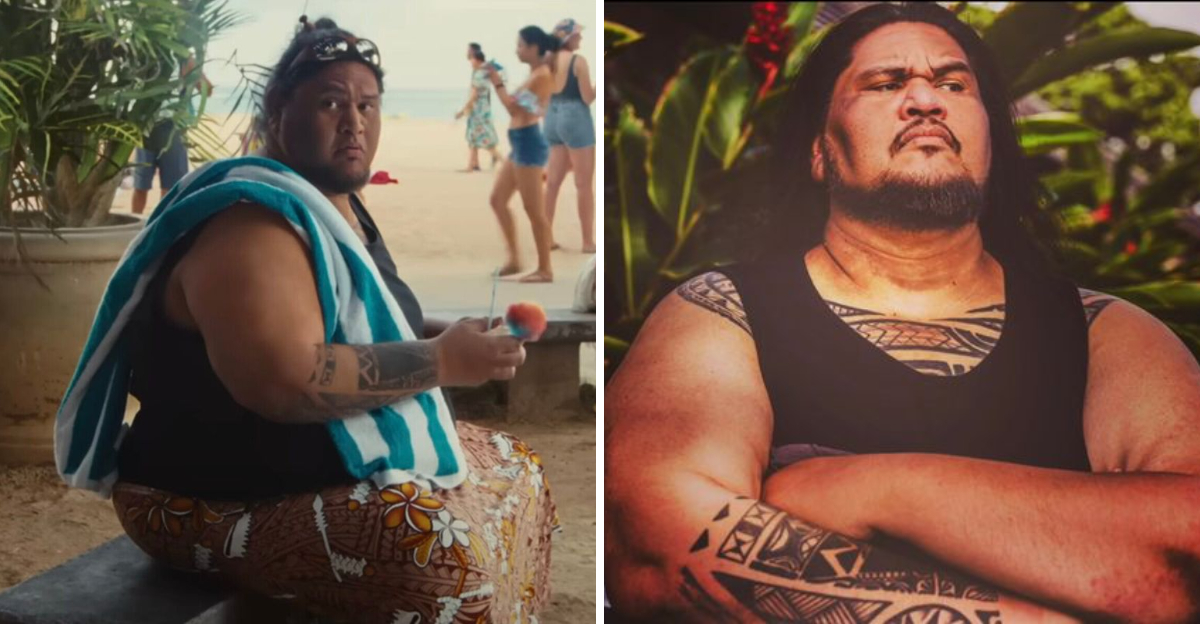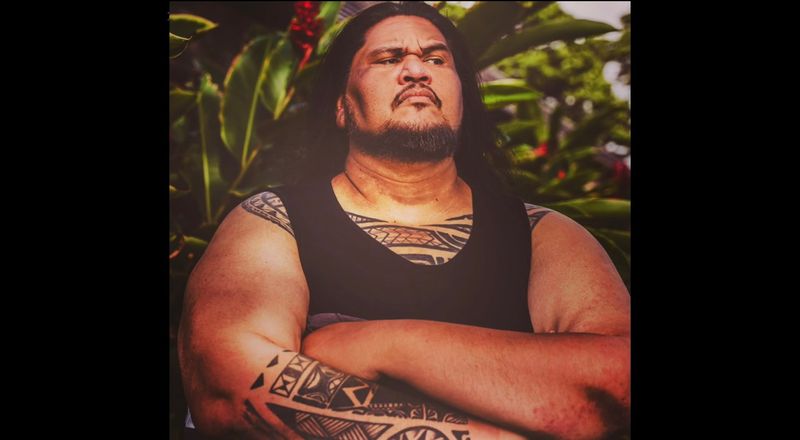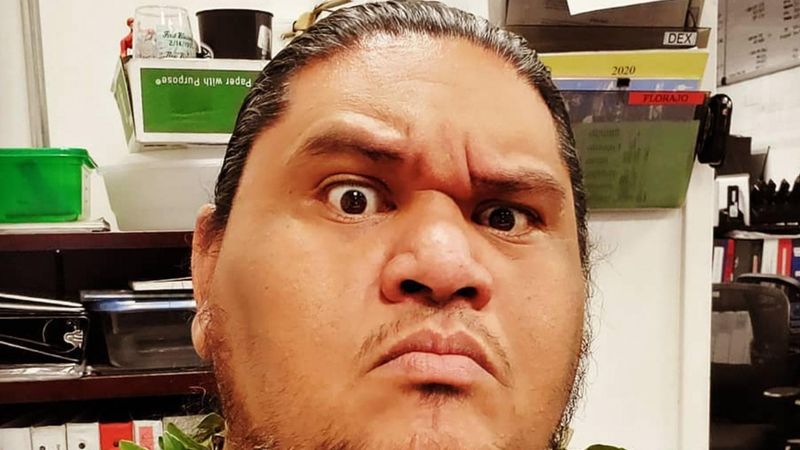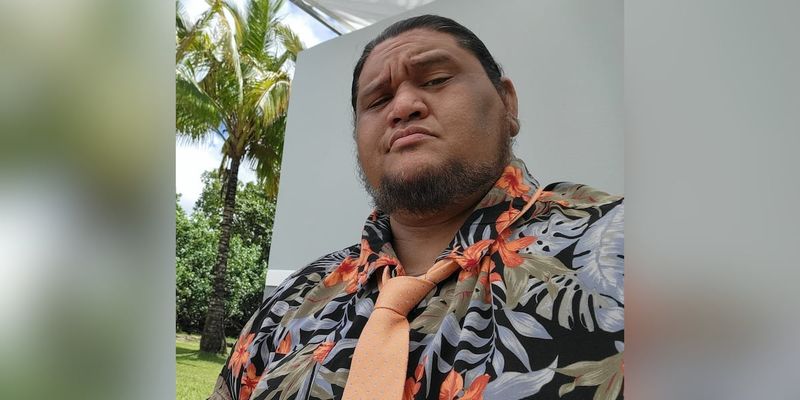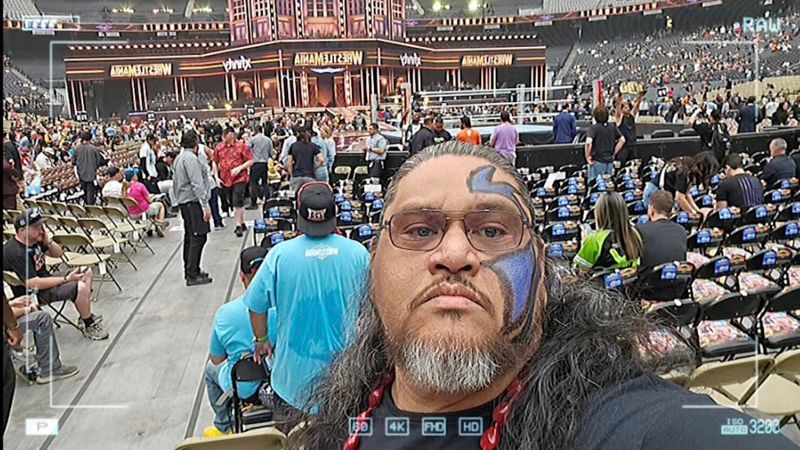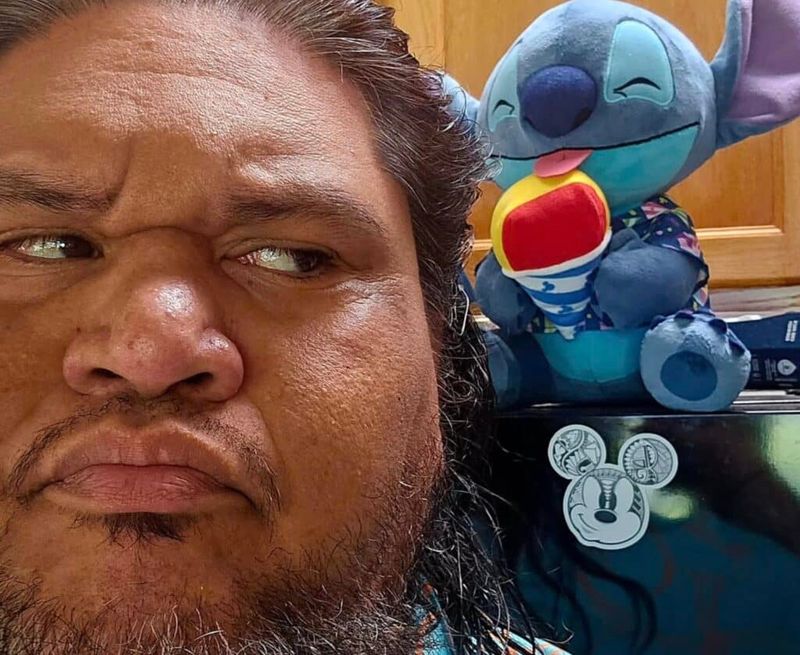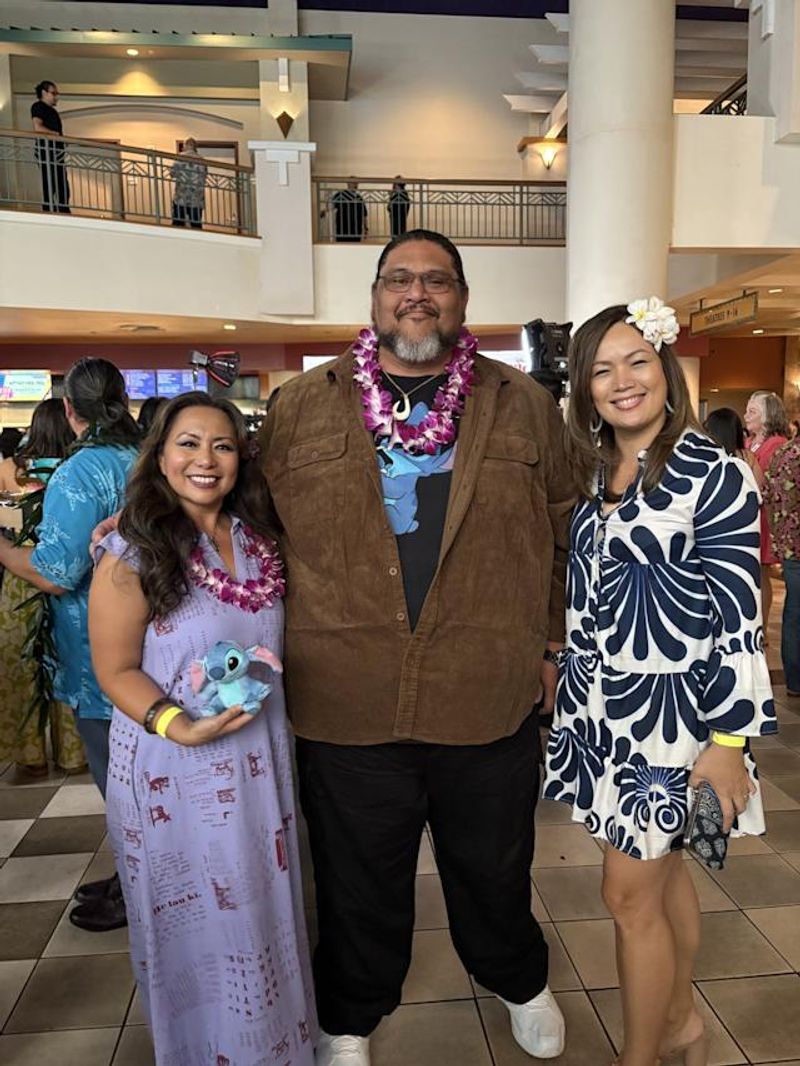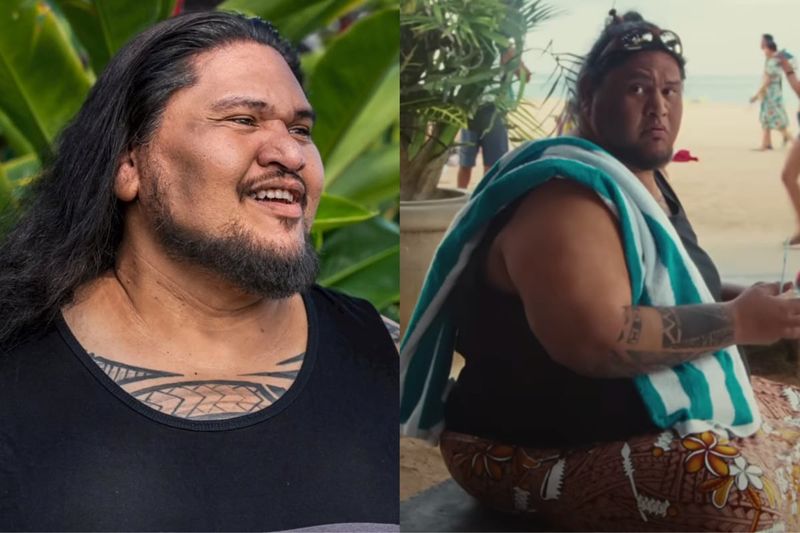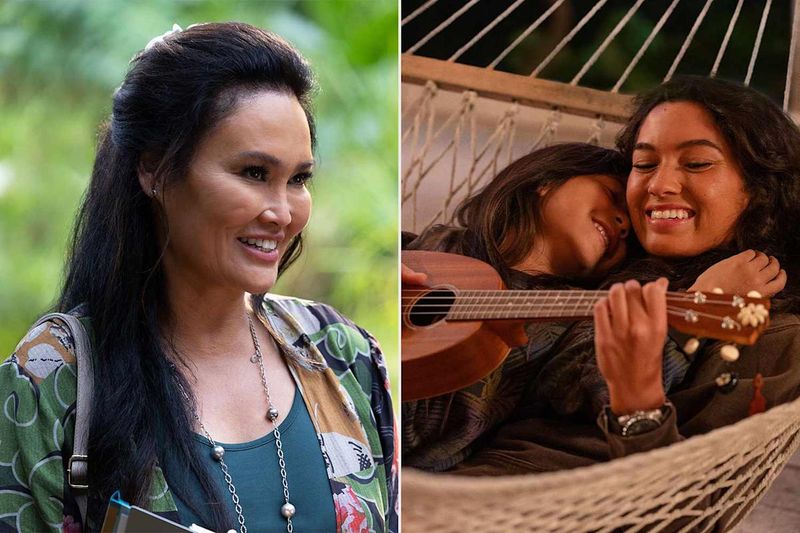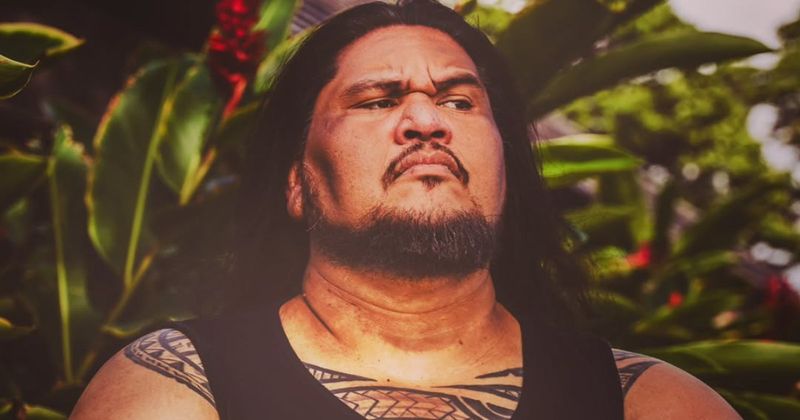David Hekili Kenui Bell touched countless lives through his authentic portrayals of Hawaiian characters and his dedication to preserving island culture. Though his time with us ended too soon, his impact reaches far beyond the screen into the very fabric of Hawaiian society. His story reminds us that true legacy isn’t measured by fame alone, but by how we uplift our communities and honor our roots.
1. The Friendly Face of Lilo & Stitch
Behind the cheerful “Shave Ice Dude” in Disney’s live-action remake stood a man who infused authentic island spirit into every frame. Bell transformed what could have been a forgettable background character into a memorable slice of Hawaiian life that resonated with audiences worldwide.
Children who watched the film often mentioned his character specifically, drawn to his warmth that transcended the screen. His performance reminded viewers that sometimes the smallest roles carry the biggest heart.
Bell often joked that serving imaginary shave ice was harder than serving the real thing—a testament to his dedication to making even brief moments count.
2. Bringing Authenticity to Magnum P.I.
As Manu Saluni in the rebooted series, Bell refused to play into Hollywood stereotypes of Hawaiian characters. Instead, he brought nuanced dignity to the role, infusing his scenes with genuine cultural touches that mainland viewers might miss but island residents immediately recognized and appreciated.
His performance created a bridge between entertainment and education. Co-stars often sought his advice on pronunciation and cultural context, establishing him as an unofficial cultural consultant on set.
The production crew noted how Bell would subtly adjust his posture and speech patterns to reflect authentic local mannerisms rather than exaggerated characterizations.
3. Hawaii Five-0’s Cultural Anchor
Bell’s portrayal of Isaac breathed life into a character that could have easily fallen into cliché territory. Through thoughtful choices in body language and delivery, he presented a man deeply connected to the land and its people—qualities Bell himself embodied off-screen.
Producers initially scripted Isaac with standard English dialogue. Bell respectfully suggested incorporating phrases in Hawaiian and Pidgin that would authentically represent local speech patterns, a change they enthusiastically adopted.
Fans of the show created tribute videos highlighting his scenes, proving that even limited screen time can leave an indelible impression when performed with heart and cultural integrity.
4. Hollywood’s Rising Hawaiian Star
The casting announcement for The Wrecking Crew alongside Jason Momoa marked a career milestone for Bell. Friends recall his excitement about joining a major production while still maintaining his commitment to authentic representation.
Bell approached the role with his characteristic blend of professionalism and cultural pride. During pre-production meetings, he gently advocated for script adjustments that would honor Hawaiian perspectives rather than exploit them for exotic flavor.
Though audiences will never see his completed performance, the production team has preserved his preliminary work as a testament to what might have been—a bittersweet reminder of talent cut short too soon.
5. Champion of ʻŌlelo Hawaiʻi
Bell wielded language as both art and activism. In public appearances, interviews, and casual conversations, he seamlessly wove together English, Hawaiian, and Pidgin—a linguistic dance that demonstrated the beautiful complexity of modern Hawaiian identity.
Young language learners found inspiration in his unapologetic embrace of traditional vocabulary. He often shared that his grandmother taught him that language wasn’t just about communication but about carrying ancestral knowledge forward.
Local educators frequently invited Bell to speak with students about language preservation. His message was consistent: “The words of our kūpuna connect us to who we truly are.”
6. The Voice That Welcomed Millions
Bell’s resonant voice greeted travelers at Kona International Airport for nearly a decade. His airport announcements weren’t merely functional—they were cultural embraces, delivered with the warmth of a friend welcoming you home.
Airport staff reported that visitors would frequently pause mid-stride when his announcements played, captivated by the genuine aloha spirit that emanated from the speakers. For returning locals, his voice symbolized the first reassurance that they were truly back on island soil.
Bell recorded these announcements as a labor of love, often refusing additional compensation because he considered it an honor to be the first voice of Hawai’i that many visitors would hear.
7. Melody Maker of the Islands
With ukulele in hand and a voice that could shift from thunderous to tender in a heartbeat, Bell transformed community gatherings into unforgettable celebrations. His musical talents remained deliberately understated—never seeking the spotlight, yet inevitably drawing attention through sheer emotional power.
Local fundraisers featuring Bell’s performances consistently exceeded donation goals. Event organizers noted how he could silence a room with traditional Hawaiian mele that connected audiences to a deeper sense of place and purpose.
Bell learned to play ukulele at age five and often credited music as his first language. “Before I could speak well,” he once said, “I could feel the rhythm of these islands in my fingers.”
8. Guardian of ʻOhana Values
Family wasn’t just important to Bell—it was his foundation and purpose. As the eldest of five siblings, he embraced the traditional Hawaiian role of family protector with characteristic humility and unwavering commitment.
Bell organized annual family reunions that became legendary for their blend of traditional practices and modern celebrations. These gatherings typically featured genealogy sharing sessions where elders passed down family histories to younger generations.
During difficult times, relatives recall how Bell would appear at their doorstep unannounced, often traveling between islands just to offer support in person. “Family isn’t an obligation,” he often said. “It’s the greatest privilege we’re given.”
9. Inspiring Mentor to Island Youth
Bell never forgot his educational roots at Kalani and Punahou Schools. He returned regularly to speak with students about embracing their heritage while pursuing their dreams, creating a bridge between traditional values and modern ambitions.
School administrators noted how Bell could connect with even the most disengaged students. His approach centered on asking young people about their stories rather than simply telling his own.
One particularly successful initiative he championed was a “shadow day” program where students interested in entertainment could observe him on set or in meetings. Many participants credit these experiences with giving them the confidence to pursue careers in creative fields.
10. The Authentic Face of Island Brewing
Bell’s collaboration with Kona Brewing Company transcended typical celebrity endorsements. He insisted that campaigns feature real island locations and authentic cultural contexts rather than manufactured tropical fantasies.
Marketing executives credit Bell with shifting their approach to emphasize community connections over tourist appeal. His suggestions led to campaigns highlighting local environmental initiatives and cultural preservation efforts alongside product promotion.
Bell famously refused to record scripts that contained inaccurate Hawaiian pronunciations or cultural stereotypes. This principled stance eventually led the company to implement cultural consultation protocols that continue today, influencing how Hawai’i is represented in advertising nationwide.
11. Crusader for Authentic Casting
“Our stories should be told through our voices” became Bell’s rallying cry in the entertainment industry. He fearlessly challenged productions filming in Hawai’i that imported mainland actors for roles that could authentically be played by local talent.
Bell maintained a digital database of Hawaiian and Pacific Islander performers that he freely shared with casting directors. This resource has directly led to hundreds of roles going to local actors who might otherwise have been overlooked.
Despite potential career consequences, Bell publicly declined roles that he felt should go to actors of specific Pacific Island backgrounds different from his own. This principled stance earned him profound respect from indigenous communities throughout Oceania.
12. Industry Trailblazer and Guide
Bell’s SAG-AFTRA membership represented more than professional status—it symbolized his commitment to creating pathways for Hawaiian performers. He regularly hosted workshops demystifying the mainland entertainment industry for island talent.
Aspiring actors recall how Bell would personally review their audition tapes, offering specific guidance on both performance and navigating industry challenges. He emphasized that success didn’t require abandoning their cultural identity or relocating permanently.
Perhaps most importantly, Bell created an informal mentorship network connecting established Hawaiian performers with newcomers. This support system continues to thrive, with mentees now becoming mentors themselves—a living legacy of his belief in lifting others as you climb.
13. Guardian of Cultural Accuracy
Production teams valued Bell’s cultural consultation work for its perfect balance of educational depth and practical application. He possessed a rare ability to correct cultural missteps without shaming those making honest mistakes.
Directors noted that Bell’s suggestions invariably enhanced storytelling rather than constraining it. His input on everything from set design to dialogue brought authenticity that audiences could sense even without understanding specific cultural references.
Bell developed a simple three-question framework for productions: “Is it accurate? Is it respectful? Does it serve the story?” This approach has been adopted by multiple studios as standard practice when filming content related to indigenous cultures, extending his influence far beyond Hawaiian-specific productions.
14. Digital Storyteller with Heart
Bell’s social media presence defied typical celebrity accounts with its genuine vulnerability and humor. He shared glimpses of everyday island life alongside thoughtful reflections on cultural preservation, creating content that educated while it entertained.
His #TalkStoryTuesdays series became particularly beloved. These short videos featured Bell sharing mo’olelo (traditional stories) or explaining cultural practices with his characteristic blend of reverence and accessibility.
Following natural disasters, Bell leveraged his platform to direct resources to affected communities. His appeals consistently generated significant support, demonstrating how authentic connection trumps mere follower count when inspiring real-world action.
15. The Heart of Community Gatherings
Bell possessed that rare magnetic quality that naturally drew people together. Community events gained special significance simply through his presence—not because of celebrity status, but because of his genuine interest in everyone he encountered.
Local organizers noted how Bell would arrive early to help set up and stay late to clean up, embodying the Hawaiian value of laulima (many hands working together). He treated everyone from elders to children with the same attentive respect.
Perhaps most telling were the quiet moments—visiting elderly neighbors, supporting new local businesses, or mediating community disagreements. These unglamorous acts of service formed the true foundation of his legacy in the hearts of those who knew him best.
